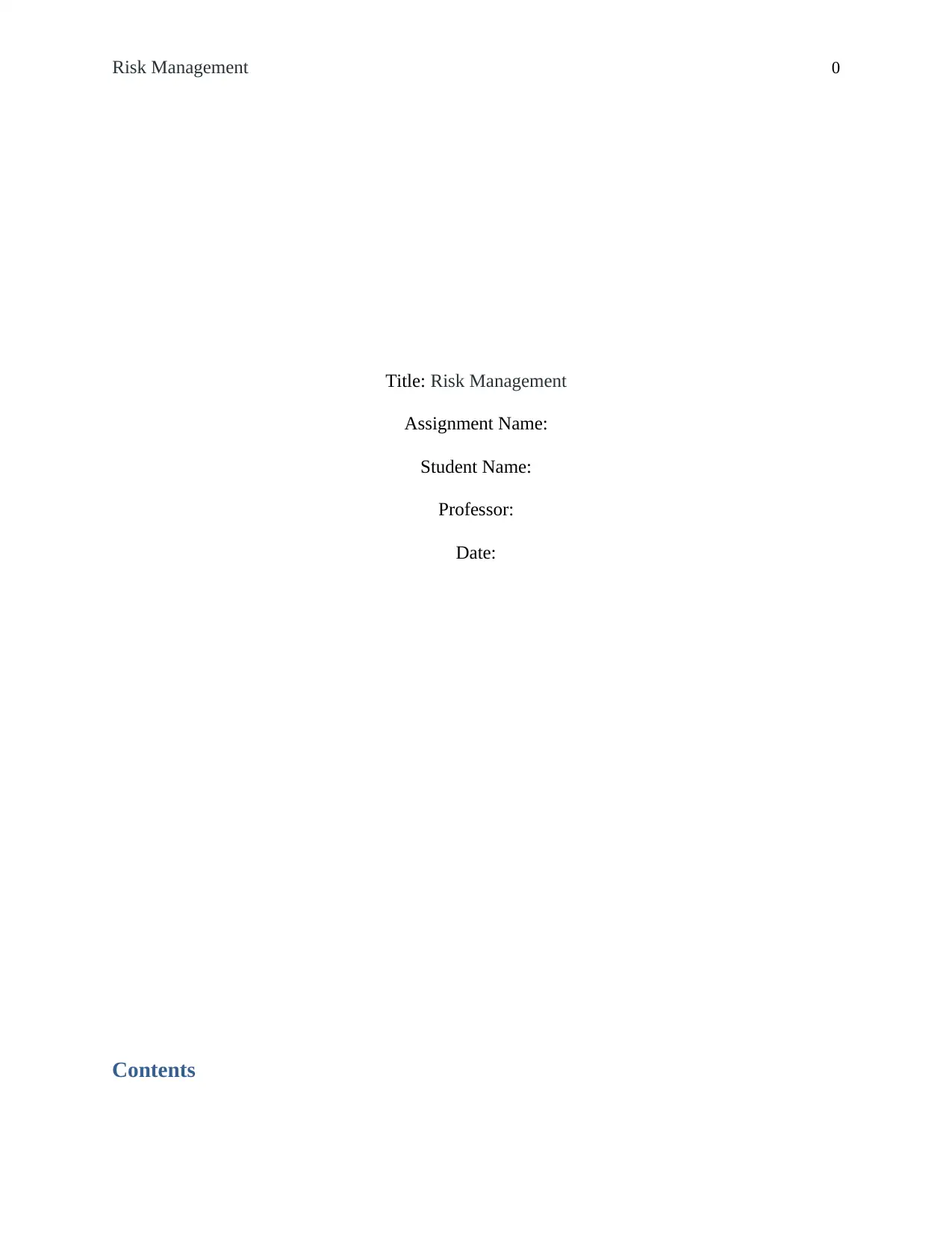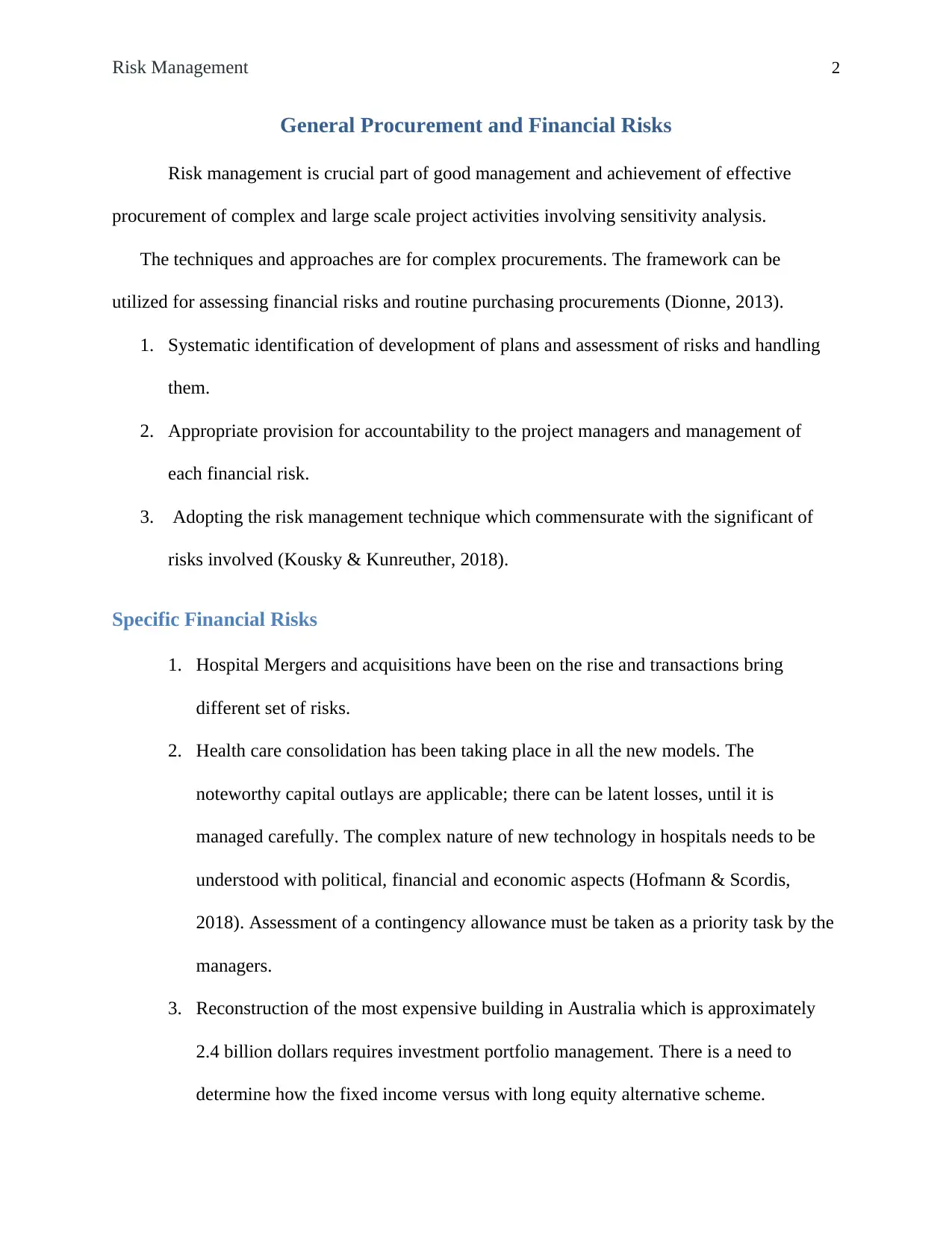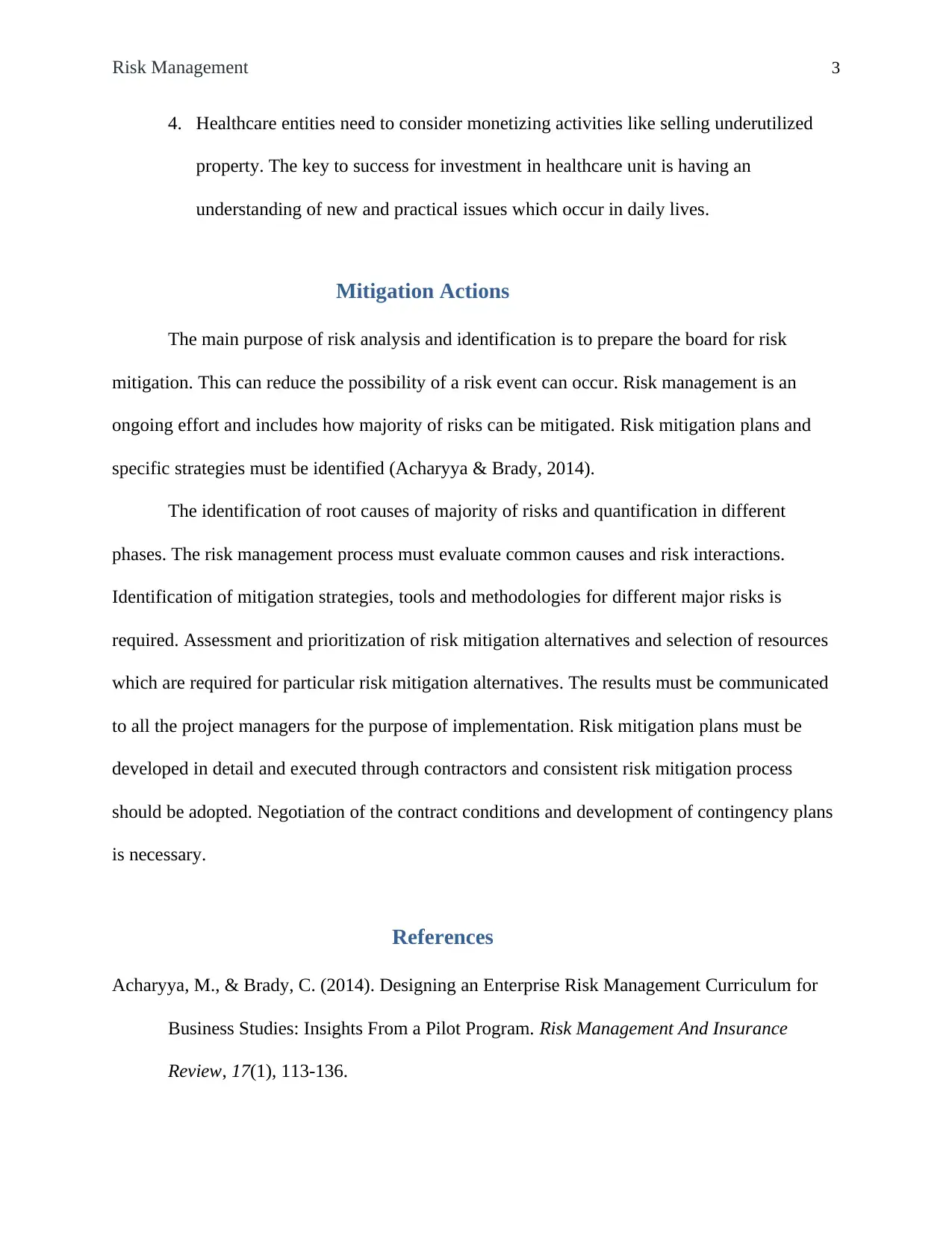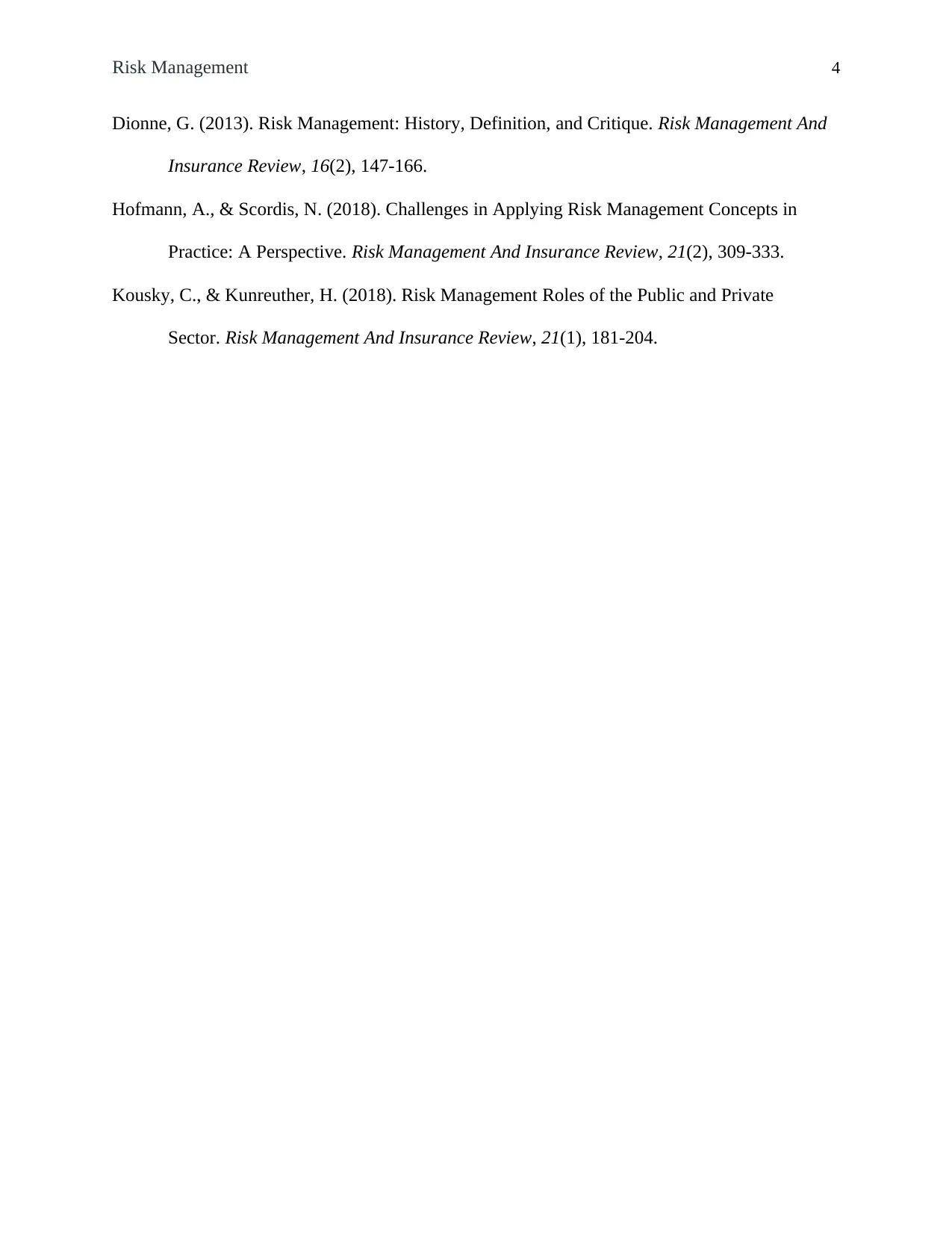Financial Risk and Mitigation in Procurement Projects Report
VerifiedAdded on 2023/06/03
|5
|658
|345
Report
AI Summary
This report focuses on financial risk management within procurement, particularly for complex projects. It begins by outlining general procurement and financial risks, emphasizing the importance of systematic risk identification, assessment, and mitigation strategies. Specific financial risks, such as those associated with hospital mergers and acquisitions and large-scale infrastructure projects like the reconstruction of the most expensive building in Australia, are examined. The report highlights the need for careful management of capital outlays and the understanding of complex technologies. It then details various risk mitigation actions, including preparing for risk mitigation, identifying root causes, quantifying risks, and developing detailed mitigation plans. References to relevant literature provide context for the discussion. The assignment also references the Auditor-General’s Annual Report, discussing contractual risks related to contamination at the new RAH site and the associated risk-sharing arrangements. The report concludes with recommendations for greater transparency and oversight throughout the project lifecycle.
1 out of 5











![[object Object]](/_next/static/media/star-bottom.7253800d.svg)